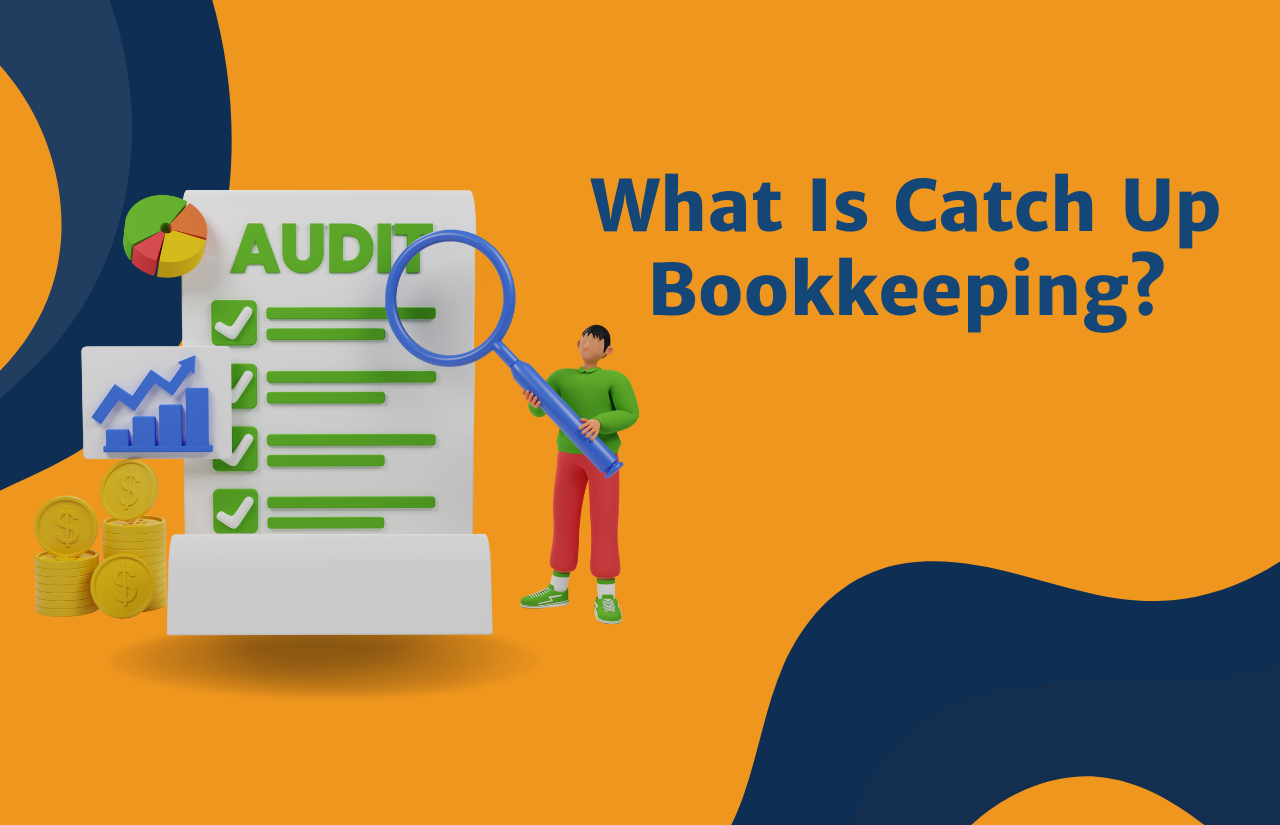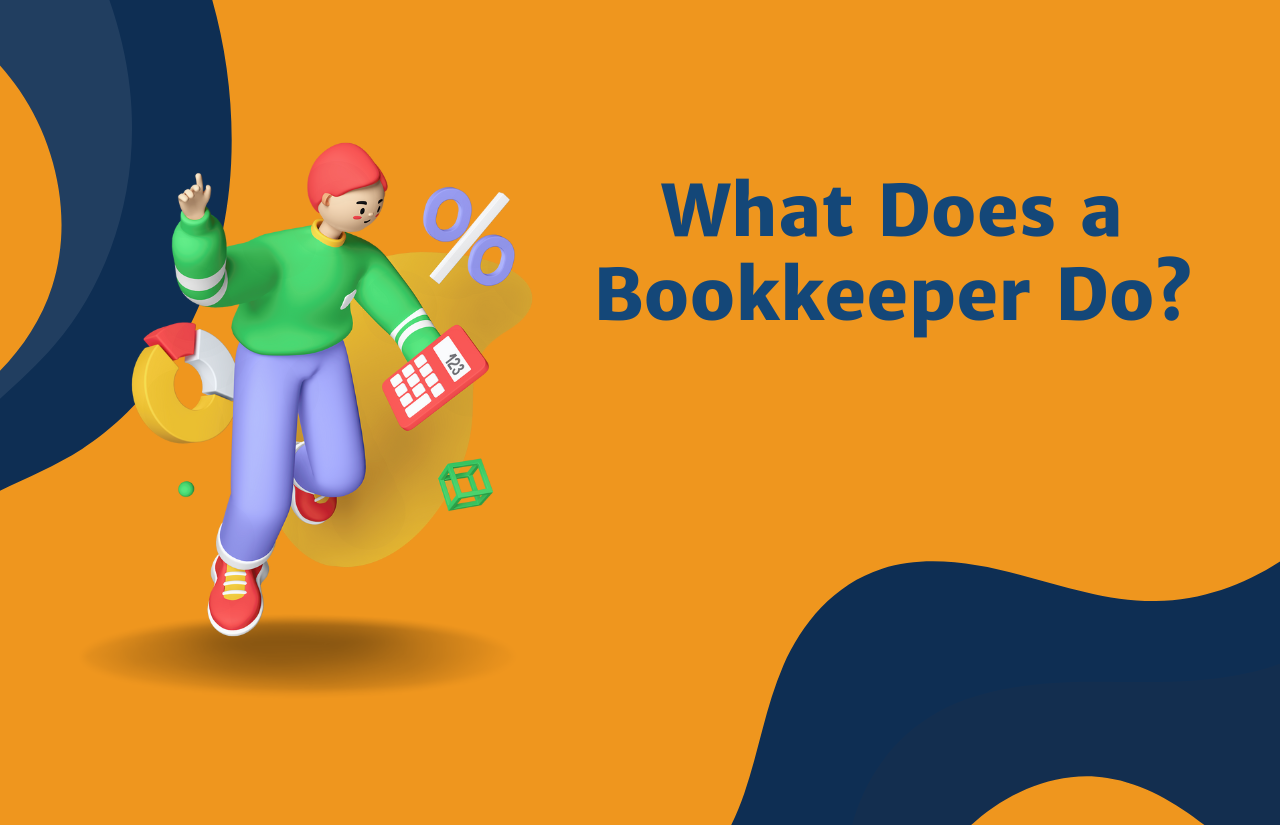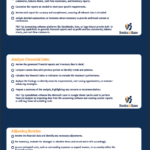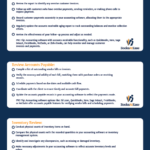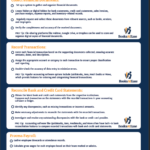Fact: Managing the finances of your small business can be challenging.
But with the right strategies and practices, you can simplify the process and gain greater control over your finances.

In this article, we will share essential bookkeeping tips that will help streamline your small business financials and set you up for success.
As a small business owner, you have to become a pro at juggling various responsibilities. While focusing on all the demands, maintaining accurate and organized financial records often takes a backseat.
The chances are you may start neglecting your bookkeeping. And by neglecting it can lead to confusion, missed opportunities, and potential financial setbacks.
That’s why it’s crucial to implement effective bookkeeping practices that simplify your financial management, provide clarity, and support informed decision-making.
In the following sections, we’ll explore practical steps to simplify your small business financials.
From organizing your financial documents to leveraging accounting software and seeking professional help, you’ll discover actionable strategies that can make a significant difference in your bookkeeping process.
So, let’s dive in and unlock the key bookkeeping tips that will help you take control of your small business finances.
Step 1: Organize Your Financial Documents
One of the fundamental steps in simplifying your small business financials is to establish an organized system for managing your financial documents.
Keeping your documents in order ensures that you have easy access to the necessary information when you need it and saves you valuable time during tax season or when making financial decisions.
Here are some key tips to help you get started:
- Separate personal and business finances: Maintain separate bank accounts and credit cards for your personal and business expenses. This separation will not only simplify your bookkeeping but also provide a clear distinction between personal and business transactions.
- Create a filing system: Develop a logical filing system for your financial documents, both physical and digital. Categorize them in a way that makes sense for your business, such as by month, expense type, or vendor. This systematic approach will make it easier to locate specific documents and track your expenses effectively.
- Digitize your documents: Embrace technology by scanning and storing your paper documents electronically. Utilize cloud-based storage solutions or accounting software with document management features to store and organize your financial records securely. This digital approach reduces clutter, minimizes the risk of losing important documents, and facilitates remote access.
- Set a regular schedule for document organization: Dedicate specific time intervals, such as weekly or monthly, to sort and file your financial documents. Consistency in organizing your records will prevent them from piling up and ensure that your bookkeeping remains up to date.

By implementing these organizational practices, you’ll lay a solid foundation for effective bookkeeping and simplify your small business financials. Plus, you will avoid the most common bookkeeping mistakes. The next step will focus on choosing the right accounting software to streamline your financial management.
Step 2: Choose the Right Accounting Software
Selecting the right accounting software is crucial for simplifying your small business financials.
With numerous options available, it’s essential to choose a solution that aligns with your specific needs and streamlines your bookkeeping processes. Consider the following factors when evaluating accounting software:
- Ease of use: Look for software that offers a user-friendly interface and intuitive navigation. A simple and straightforward system will save you time and frustration when managing your financial records.
- Automation features: Seek accounting software that automates repetitive tasks such as invoicing, expense tracking, and bank reconciliation. Automation eliminates manual data entry, reduces errors, and frees up your time for more critical business activities.
- Compatibility and integrations: Ensure that the accounting software integrates seamlessly with other tools you use, such as payment processors, e-commerce platforms, or inventory management systems. This integration streamlines data flow and eliminates the need for manual data entry across multiple platforms.
- Reporting capabilities: Look for software that provides comprehensive reporting functionalities. Customizable reports, such as profit and loss statements, balance sheets, and cash flow statements, give you valuable insights into your business’s financial health.
- Cloud-based accessibility: Opt for cloud-based accounting software that allows you to access your financial data from anywhere, anytime. This feature is especially beneficial for remote work environments and ensures that you have real-time visibility into your financials.
- Security and data protection: Prioritize software that implements robust security measures to protect your financial data. Look for features such as data encryption, secure backups, and user access controls to safeguard your sensitive information.
Take the time to research and compare different accounting software options, considering their pricing, customer reviews, and support services.
Remember, investing in the right accounting software will streamline your bookkeeping processes and help you stay organized as your business grows.
Step 3: Implement Accurate Expense Tracking
Accurate and consistent expense tracking is vital for maintaining clear financial records and simplifying your small business’s financials.
Here are some essential tips to help you streamline your expense-tracking process:
- Establish a system: Set up a dedicated system to track and record all your business expenses. This can be as simple as using a spreadsheet or utilizing accounting software with expense-tracking features. The key is to have a designated method that allows you to capture and categorize your expenses efficiently.
- Capture receipts: Keep track of all your receipts, whether in physical or digital format. Make it a habit to document and store receipts promptly, as they serve as evidence for your business expenses and are crucial during tax season. Consider using mobile apps that can scan and store digital copies of your receipts for easy access and organization.
- Categorize expenses: Create a consistent and well-defined system for categorizing your expenses. This can be based on expense types, such as supplies, utilities, marketing, or travel. Consistent categorization allows for better expense analysis and reporting, providing you with insights into your business’s spending patterns.
- Separate personal and business expenses: Avoid mingling personal and business expenses. Maintain separate bank accounts and credit cards for your business to ensure clean and accurate financial records. This separation simplifies expense tracking and makes it easier to identify deductible business expenses during tax time.
- Track mileage: If your business involves travel or deliveries, track your mileage diligently. Use mileage tracking apps or logbooks to record the distance traveled for business purposes. These records are valuable for claiming mileage deductions and accurately tracking your transportation expenses.
- Regularly reconcile your accounts: Reconciliation involves comparing your recorded expenses with your bank and credit card statements to ensure accuracy and identify any discrepancies. Regularly reconcile your accounts to catch errors, identify missing transactions, and maintain the integrity of your financial records.
By implementing a robust expense tracking system and consistently recording and categorizing your expenses, you’ll have a clear and organized overview of your small business’s financials.

Accurate expense tracking simplifies financial analysis, helps with budgeting, and ensures compliance with tax regulations.
Step 4: Automate and Streamline Bookkeeping Processes
Efficient bookkeeping processes are essential for simplifying small business financials.
By automating and streamlining these processes, you can save time, reduce errors, and gain better insights into your business’s financial health. Here are some tips to help you automate and streamline your bookkeeping tasks:
- Use accounting software: Invest in reliable accounting software that aligns with the needs of your small business. Accounting software, such as QuickBooks or Xero, offers features that automate various bookkeeping tasks, including invoicing, expense tracking, and financial reporting. These tools provide a centralized platform for managing your financials and can significantly simplify the bookkeeping process.
Let us introduce you to our guide for the best SMB Bookkeeping Software.
- Automate invoicing and payment collection: Streamline your invoicing process by setting up automated invoicing systems. Use accounting software to generate and send invoices automatically, ensuring accurate records and timely payment reminders. Consider integrating payment gateways or platforms that allow customers to make online payments directly, minimizing manual payment collection efforts.
- Sync bank and credit card transactions: Take advantage of bank and credit card integration features provided by accounting software. Syncing your financial institution accounts with your software allows for the automatic import and categorization of transactions, reducing the need for manual data entry. This automation not only saves time but also ensures accurate recording of income and expenses.
- Utilize cloud storage: Store your financial documents and records securely in the cloud. Cloud-based storage solutions, such as Dropbox or Google Drive, provide convenient and centralized access to your financial files from anywhere. This accessibility simplifies collaboration with your bookkeeper or accountant and eliminates the risk of losing important documents.
- Set up recurring expense payments: Identify recurring expenses, such as subscriptions or utility bills, and set up automatic payments whenever possible. This eliminates the need for manual payment processing each time and ensures consistent and timely expense recording.
- Generate regular financial reports: Leverage the reporting capabilities of your accounting software to generate regular financial reports. These reports provide valuable insights into your business’s financial performance, cash flow, and profitability. Reviewing these reports regularly allows you to make informed decisions and identify areas for improvement.
By automating and streamlining your bookkeeping processes, you can reduce the administrative burden and focus more on growing your small business.
These practices not only simplify financial record-keeping but also enhance accuracy, efficiency, and overall financial management.
Step 5: Implement Effective Cash Flow Management Strategies
Managing cash flow is crucial for the financial stability and success of your small business. It involves monitoring the flow of money in and out of your business to ensure you have enough funds to cover expenses, meet financial obligations, and seize growth opportunities.
Here are some essential strategies to help you effectively manage your small business cash flow:
- Forecast and monitor cash flow: Create a cash flow forecast that outlines your expected inflows and outflows of cash over a specific period, such as a month or a quarter. This forecast helps you anticipate any potential cash shortages or surpluses, allowing you to take proactive measures to address them. Regularly monitor your actual cash flow against the forecast to identify any deviations and make adjustments accordingly.
- Manage accounts receivable: Promptly invoice your customers and establish clear payment terms. Follow up on outstanding invoices and implement a system for tracking and collecting payments. Consider offering incentives for early or upfront payments to improve cash flow. If you encounter consistent issues with late payments, you may also explore invoice factoring or financing options to accelerate cash inflows.
- Negotiate favorable payment terms: When dealing with suppliers or vendors, negotiate payment terms that align with your cash flow needs. Request extended payment terms or explore options like trade credit, where you can defer payments without incurring interest or penalties. Negotiating favorable terms can help you manage cash outflows effectively and maintain healthy working capital.
- Control inventory levels: Excessive inventory ties up valuable cash. Analyze your sales patterns and adjust your inventory levels accordingly to avoid overstocking. Implement just-in-time inventory management practices to optimize cash flow by ordering inventory only when needed. Regularly review and track your inventory turnover ratio to ensure efficient utilization of your working capital.
- Monitor and control expenses: Regularly review your expenses to identify opportunities for cost savings and efficiency improvements. Look for areas where you can cut unnecessary expenditures or negotiate better pricing with suppliers. Consider using technology tools, such as expense management software, to track and control expenses effectively. By managing expenses wisely, you can free up cash for other business needs.
- Maintain a cash reserve: Establish a cash reserve or emergency fund to handle unexpected expenses or cash flow disruptions. Set aside a portion of your profits to build this reserve over time. Having a cushion of readily available cash provides a safety net during challenging periods and allows you to navigate through temporary cash flow gaps.
By implementing these cash flow management strategies, you can maintain healthy cash flow, improve financial stability, and position your small business for growth.
Here is a reminder for important financial reports that you should have in mind.
Step 6: Embrace Technology for Streamlined Bookkeeping
In today’s digital age, leveraging technology can significantly simplify and streamline your bookkeeping processes.
By adopting the right tools and software, you can automate repetitive tasks, reduce errors, and gain better insights into your small business finances.

Here are some ways to embrace technology for streamlined bookkeeping:
- Cloud-based accounting software: Invest in cloud-based accounting software, such as QuickBooks or Xero, to manage your bookkeeping efficiently. These platforms offer features like automated invoicing, expense tracking, bank reconciliation, and financial reporting. Cloud-based solutions allow you to access your financial data anytime, anywhere, and collaborate with your accountant or bookkeeper seamlessly.
- Receipt scanning and expense tracking apps: Simplify expense tracking by using receipt scanning apps like Expensify or Shoeboxed. These apps enable you to capture and store receipts digitally, categorize expenses, and track them in real time. By eliminating the need for manual data entry, you save time and reduce the risk of losing important receipts.
- Online banking and payment platforms: Utilize online banking services and payment platforms to streamline your financial transactions. Set up automatic bank feeds to sync your bank accounts with your accounting software, ensuring accurate and up-to-date records of income and expenses. Online payment platforms, such as PayPal or Stripe, can simplify invoicing and facilitate seamless online transactions.
- Automated invoicing and payment reminders: Take advantage of automated invoicing features offered by accounting software. Create customized invoice templates, automate invoice generation, and set up recurring invoices for regular clients. Additionally, utilize payment reminders to prompt clients for timely payments, reducing the need for manual follow-ups and improving cash flow.
- Expense management and budgeting tools: Use expense management tools like Expensify or PocketSmith to track and manage your business expenses effectively. These tools provide insights into spending patterns, help you set budgets, and generate reports to monitor your financial health. By gaining a clear understanding of your expenses, you can make informed decisions to optimize your financial resources.
- Digital document storage: Instead of drowning in piles of paperwork, digitize your documents and store them securely in the cloud. Use document management platforms like Google Drive or Dropbox to organize and store important financial records, receipts, contracts, and invoices. Cloud storage ensures easy accessibility, reduces physical clutter, and protects your documents from loss or damage.
By embracing technology for streamlined bookkeeping, you can save time, reduce manual errors, and have better control over your small business finances.
Conclusion
Efficient bookkeeping is essential for the financial success of your small business. By implementing the right strategies and following these bookkeeping tips, you can simplify your financial processes, gain valuable insights, and make informed decisions to drive growth.
Remember, bookkeeping doesn’t have to be overwhelming or time-consuming if you approach it with the right mindset and tools.
To recap, we covered several key steps to simplify your small business financials:
- Separate personal and business finances
- Maintain organized and up-to-date records
- Establish a consistent bookkeeping schedule
- Categorize and track income and expenses
- Reconcile accounts regularly
- Embrace technology for streamlined bookkeeping
By incorporating these practices into your bookkeeping routine, you’ll save time, minimize errors, and have a clearer picture of your business’s financial health.
Remember, it’s important to stay proactive and diligent with your bookkeeping efforts to ensure accuracy and compliance.

If you find bookkeeping overwhelming or prefer to focus on other aspects of your business, consider seeking the assistance of a professional bookkeeper or accountant.
They can provide expert guidance, handle complex financial tasks, and ensure your records are accurate and in compliance with tax regulations.
Take control of your small business financials today and set yourself up for long-term success. Implement these bookkeeping tips, explore accounting software options, and stay informed about financial best practices in your industry.
Your dedication to maintaining organized and accurate financial records will pay off in the form of improved decision-making, better financial management, and increased profitability.


